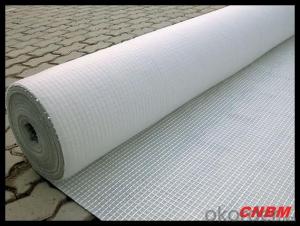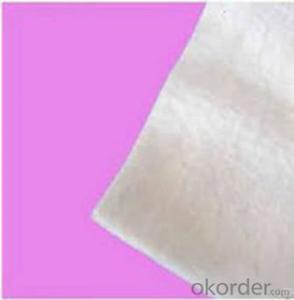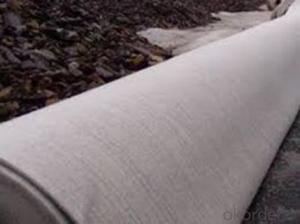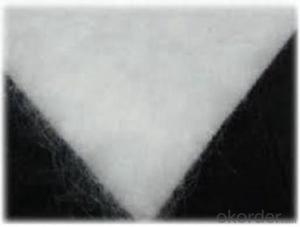Needle Punched Nonwoven Geotextile Polyethylene for Reinforcement and Drainage
- Loading Port:
- China main port
- Payment Terms:
- TT OR LC
- Min Order Qty:
- 2000 g/m²
- Supply Capability:
- 1000000 g/m²/month
OKorder Service Pledge
OKorder Financial Service
You Might Also Like
Item specifice
Nonwoven geotextile for filtration Product Technical Parameter
Item | 100 | 150 | 200 | 250 | 300 | 350 | 400 | 450 | 500 | 600 | 800 | Remark |
Deviation of Mass Per Unit % | 8 | 8 | 8 | 8 | 7 | 7 | 7 | 7 | 6 | 6 | 6 | |
Thickness(mm≥) | 0.9 | 1.3 | 1.7 | 2.1 | 2.4 | 2.7 | 3.0 | 3.3 | 3.6 | 4.1 | 5.0 | |
Rate deviation (%) | -0.5 | |||||||||||
Fracture strength(KN/m ≥) | 2.5 | 4.5 | 6.5 | 8.0 | 9.5 | 11.0 | 12.5 | 14.0 | 16.0 | 19.0 | 25.0 | |
Fracture pulling ratio % | 25~100 | MD/CD | ||||||||||
CBR bursting strength( KN≥) | 0.3 | 0.6 | 0.9 | 1.2 | 1.5 | 1.8 | 2.1 | 2.4 | 2.7 | 3.2 | 4.0 | |
EOS O90(O95) mm | 0.07~0.2 | |||||||||||
Coefficient of vertically permeability (cm/s) | K×(10-1-10-3) | K=1.0-9.9 | ||||||||||
Tearing strength (KN≥) | 0.08 | 0.12 | 0.16 | 0.20 | 0.24 | 0.28 | 0.33 | 0.38 | 0.42 | 0.46 | 0.60 | MD/CD |

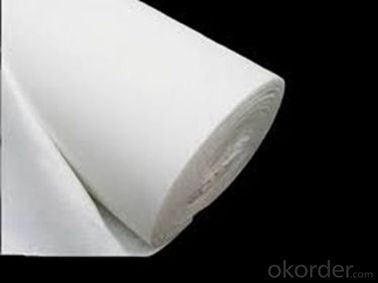
FAQ:
Q: What kind of payments does jenor support?
A: T/T, L/C, Cash are accepted.
Q: Do you charge for the samples?
A: Accordeing to our company policy, the samples are free, we only charge the freight fee. And we will return the freight fee during the next order.
Q: Can you produce according to customers' design?
A: Sure, we are professional manufacturer, OEM and ODM are both welcome.
Q: Do you have other products?
A: Yes, please check the pictures:
- Q:Can geotextiles be used in erosion control in stormwater detention ponds?
- Yes, geotextiles can be used in erosion control in stormwater detention ponds. These permeable fabrics can provide stabilization and reinforcement to the soil, preventing erosion and promoting efficient stormwater management in detention ponds. They can be installed as filters, liners, or erosion control blankets, effectively reducing sediment runoff and protecting the pond from erosion caused by heavy flows and wave action.
- Q:This is a large sample of gravel anti-filter how this project count
- Lack of slope and total length, can not accurately calculate the amount of engineering. Approximate estimates of cross-sectional area, then only a few simple graphics: clay tamping (rectangular), coarse gravel (trapezium), gravel and gravel (zoned plus parallel quadrilateral), geotextile (four sections)!
- Q:What are the key factors affecting the filtration performance of geotextiles?
- The key factors affecting the filtration performance of geotextiles include the permeability of the geotextile, the pore size distribution, the thickness and weight of the geotextile, the hydraulic gradient, and the particle size of the soil being filtered.
- Q:What is a geotextile?
- A geotextile is a synthetic material that is used in civil engineering and construction projects to separate, filter, reinforce, or drain soil and other materials. It is designed to provide strength, stability, and durability to the soil, while also allowing water and other liquids to pass through.
- Q:How do geotextiles help in reducing the impact of heavy rainfall on soil?
- Geotextiles help in reducing the impact of heavy rainfall on soil by acting as a protective barrier. They allow water to pass through while preventing soil erosion and retaining soil particles in place. This prevents the loss of valuable topsoil, which helps to maintain soil fertility and structure. Additionally, geotextiles aid in promoting water infiltration and drainage, reducing the risk of waterlogging and surface runoff, which can cause floods or soil erosion.
- Q:Neighborhoods: anti-seepage composite geotextile testing need to follow which test specifications, and routine testing items.
- (G / sq.m), film thickness (mm), mass per unit area deviation (%), breaking strength (KN / m), the product quality (GB / T-1998) (KN), the equivalent pore diameter O55 (mm), the vertical permeability coefficient (cm / s), the hydrostatic pressure (Mpa), the tearing strength (KN), the CBR breaking strength (KN) The And the front two said the basic almost, but hope that a detailed description can make you more clearly point.
- Q:How are geotextiles used in drainage systems?
- Geotextiles are commonly used in drainage systems to enhance their efficiency and longevity. These synthetic fabrics are placed in various parts of the system, such as around pipes or in trenches, to act as a filter and separator. By preventing the clogging of soil particles, geotextiles allow water to flow through while preventing the passage of fine particles. This helps maintain the system's hydraulic capacity and prevents blockages, ultimately improving the overall performance of the drainage system.
- Q:There is no geotextile in the sand filter with the biological retention
- You can use geotextiles
- Q:How are geotextiles tested for permeability?
- Geotextiles are tested for permeability using various standardized methods such as the constant head method, falling head method, and the flexible wall permeameter. These tests involve measuring the flow of water through the geotextile under controlled conditions to determine its permeability characteristics.
1. Manufacturer Overview |
|
|---|---|
| Location | |
| Year Established | |
| Annual Output Value | |
| Main Markets | |
| Company Certifications | |
2. Manufacturer Certificates |
|
|---|---|
| a) Certification Name | |
| Range | |
| Reference | |
| Validity Period | |
3. Manufacturer Capability |
|
|---|---|
| a)Trade Capacity | |
| Nearest Port | |
| Export Percentage | |
| No.of Employees in Trade Department | |
| Language Spoken: | |
| b)Factory Information | |
| Factory Size: | |
| No. of Production Lines | |
| Contract Manufacturing | |
| Product Price Range | |
Send your message to us
Needle Punched Nonwoven Geotextile Polyethylene for Reinforcement and Drainage
- Loading Port:
- China main port
- Payment Terms:
- TT OR LC
- Min Order Qty:
- 2000 g/m²
- Supply Capability:
- 1000000 g/m²/month
OKorder Service Pledge
OKorder Financial Service
Similar products
New products
Hot products
Related keywords
